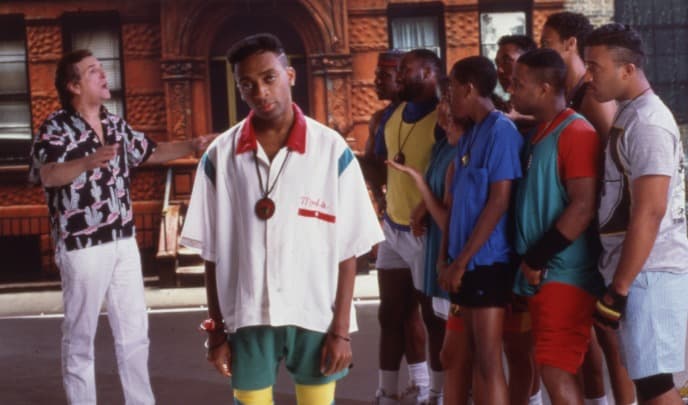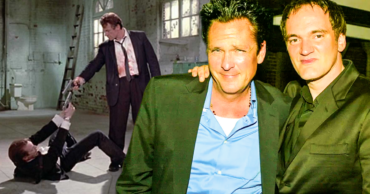
The Cannes International Film Festival is “widely considered the most prestigious film festival in the world” (Wilkinson) and in the world of cinema, no greater forum exists to premiere one’s work. In May of 1989, the third feature film of a burgeoning, revolutionary filmmaker debuted at Cannes. Legendary film critic Roger Ebert left that screening having been moved to tears of raw emotion and genuine disbelief. Ebert would later recount, “I have been given only a few film going experiences in my life to equal the first time I saw Do the Right Thing” (Haber). The 32 year-old writer, director and star of “Do the Right Thing” was the burgeoning, revolutionary filmmaker Spike Lee. Although “Do the Right Thing” was not unanimously well received at its Cannes coronation, the effects of the film would become far reaching and eternal as it provided the archetype for a new generation of cinematic auteur – the independent filmmaker.
Through the distortion of 30 years worth of hindsight, one may have difficulty understanding the iconic “Do the Right Thing” defined within the confines of an independent film. In actuality, the term “independent film” is a misnomer because no film is entirely self reliant. As is the case, no true definition exists for “independent film”. There are however characteristics that are representative of most independent films and “Do the Right Thing” exhibits more than most.
When the term “independent” is associated with a film, the first thought that resonates with many people is risky or controversial subject matter. A hallmark of most independent films usually involves a highly personal tone dealing with issues specifically significant to that filmmaker. Cultural anthropologist Sherry Ortner Illuminates this concept further with her essay entitled “Against Hollywood: American Independent Film as a Critical Cultural Movement”. Ortner explains, “Specifically, many independent films embrace a kind of harsh realism, making films that display the dark realities of contemporary life, and that make demands on the viewer to viscerally experience and come to grips with those realities” (Koehler).
Independent filmmakers are in the unique position of not having to appeal to the masses or appease studio demands. Consequently, most studios are usually not willing to take the risk on films that deal with the subjects or hot button issues indicative of independent films. In the case of “Do the Right Thing”, Spike Lee “would focus on some of the hottest hot buttons around, including racism, immigration, gentrification, and police brutality” (Haber). Not only did Lee’s film deal with the most controversial of subject matters, he brought those harsh realities to light while adding an extremely personal tone by setting the entire film in his home borough of Brooklyn.
Many consider strict financial constraints and a tight budget to be the heartbeat of independent (indie) film. A frequent expert definition of an independent film with regards to today’s cinematic landscape would necessitate a budget “of less than $20 million” (Koehler). Originally, Spike Lee proposed a $10 million budget for the project but was forced to make concessions. “Do the Right Thing” registered a final budget of about 6.5 million 1989 dollars. Considering that was the same final budget of “The Godfather” some 17 years earlier, the price tag of “Right Thing” certainly fits the bill. This is not to say that Lee’s concessions fit the characteristic of a quintessential independent shoestring budget. For example, Lee’s first cinematic release, 1986’s “She’s Gotta Have It was made for just $175,000 in two weeks and went on to earn 40 times that amount at the box office” (Anthony).
To further illustrate the role that budget plays in defining an independent film, Kevin Smith’s “Clerks”, a picture considered by many to personify the quintessential indie film of the last 25 years “was reportedly made for $27,575 at a time when the average negative cost for a Hollywood feature was approximately $30 million” (Belton). Comparatively, “Right Thing” operated with a healthier budget. However, that fact does not suggest that “Right Thing” is any less of an indie film because its final budget may have operated on less of a shoestring. One way that “Right Thing” kept the budget low while also adhering to a classic indie characteristic is that it features an ensemble cast of mostly unknown actors or “actors that are not A-list superstars” (Moore).
Right Thing contained an electric, eclectic cast that created an intense, dramatic dynamic. All of the actors turned in stellar performances but the fact remains that the film did not contain the single marketable star indicative of the studio Hollywood picture. At the time, Giancarlo Esposito was years away from his career defining turn in the television series Breaking Bad and Samuel L. Jackson had yet to strike the nerve in the public consciousness that would ultimately make him the highest grossing movie star of all time. Ossie Davis, John Turturro and Ruby Dee were well respected within the industry but held little box office drawing power. Spike Lee’s sister in the film was played by his real life sister, Joie Lee and future stars Rosie Perez and Martin Lawrence were both making their screen debuts. The two leads were embodied by Danny Aiello, a career supporting actor and Lee himself. Nowhere to be found were the likes of a Stallone, Cruise or Schwarzenegger. The film was certainly long on star quality performances, but short on the stars necessary to warrant high end studio backing. This is not to suggest however that “Right Thing” received no studio backing.
A point of contention among indie film advocates has usually been that in order for a film to truly be independent, it must be made without the financial backing or support of a major studio. In this way, “Right Thing” does not fulfill a classic qualification of indie film. Lee was already established at a major studio and “despite his studio debut ‘School Daze’ flopping, He was still a hot property, and his third film ‘Do the Right Thing’ was originally set up at Paramount” (Lyttleton). Indie film purists may argue that based solely on Lee’s existence as a component of the studio system, he has ceased to be an indie filmmaker. Those judgments would be premature. This is because even if a filmmaker exists entirely without studio backing, one must exist as a component in the system in some incarnation. What matters most is that the filmmaker be allowed to express his or her vision and if the only way possible to achieve that is through the studio system, so be it. As Lee stated in a November 2018 interview, “In my career I’ve had one foot in the indie world, one in the studio world. Where the money is, that’s where filmmakers have to go” (Lang). The fact that the filmmaker receives studio support does not change the essence of the vision. Writer and cinematic scholar John August sums up the debate rather succinctly when he expounded, “I’d argue that the term ‘independent film’ should be reserved for talking about the movie itself, rather than how it was financed” (Koehler). In essence, do not confuse the means by which to justify the vision.
In the 1994 Edge of Hollywood installment of the American Cinema Series, veteran film producer Joe Stark stated that “Indie filmmakers have their own vision and they want to produce their own vision. That’s the most important thing”. Using Stark’s definition as a qualifying benchmark, “Right Thing” is very much representative of an indie film. This can be illustrated by illuminating the concept of creative control. To an indie filmmaker, creative control is everything. With the loss of creative control, so too lost is the all important vision. When indie filmmaking legend Kevin Smith once tested the waters of the big budget studio system, it was a mistake he vowed never to make again because he was stripped of his creative control. Smith stated of his experience: “I never want to go through this shit again… It got me to a point where I was like, ‘I don’t want to fucking work with a lot of money, because that means that the studio is going to make you do whatever you can to make it more palatable to the masses” (Koehler). The retention of creative control was demonstrated by Spike Lee in the protection of his vision with the movie studios.
As Paramount studios neared pre-production finalization on “Right Thing”, the studio stipulated that Lee change the ending of the picture to encapsulate a more joyful, more harmonious conclusion. Lee did not buckle to studio pressure. As he related to New York Magazine, “They wanted Mookie and Sal to hug and be friends and sing ‘We Are the World. They told me this on a Friday; Monday morning we were at Universal” (Lyttleton). By the end of business Monday, the deal with Universal had been finalized with Lee retaining creative control as well as final cut approval. The most important factor to Lee was that the film that he wrote be the same film shown on the screen. The integrity of his vision was preserved and his vision was what was produced. In accomplishing that, “Do the Right Thing” satisfied a prime characteristic of the independent film and Spike Lee satisfied the chief tenet of the indie filmmaker. As a result, in the 30 years since its completion, “Do the Right Thing” has inspired a generation of filmmakers to do their own thing.
Works Cited:
- Anthony, A. (November 25, 2017). Spike Lee: still the boldest and brashest auteur in American film. Retrieved December 3, 2018
- Belton, J. American Cinema/American Culture. New York: McGraw-Hill, 2013. 410. Print.
- Haber, M. (June 28, 2015). The Little Known Story Behind Do the Right Thing. Retrieved December 3, 2018
- Koehler, M. (2018). What Makes an Independent Film “Independent”? Retrieved December 2, 2018
- Lang, J. (November 10, 2018). Spike Lee: ‘Where the money is, That’s Where Filmmakers Have to Go’. Retrieved December 3, 2018
- Lyttelton, O. (July 2, 2012). 5 Things You May Not Know About ‘Do The Right Thing’. Retrieved December 3, 2018
- Moore, E. (June 25, 2016). What is an Indie Movie? Retrieved December 3, 2018
- Wilkinson, A. (May 7, 2018). Why the Cannes Film Festival Matters. Retrieved December 2, 2018
 Follow Us
Follow Us





